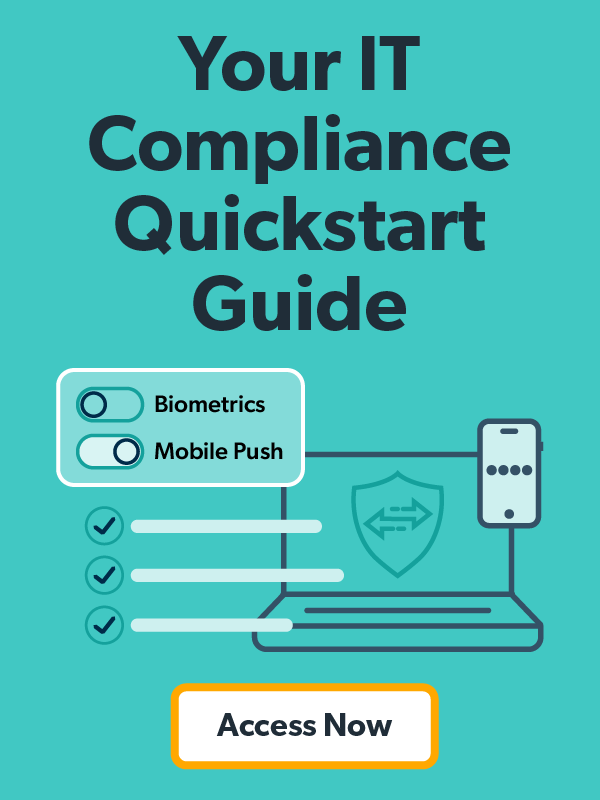You might feel overwhelmed by all the security frameworks out there. One day, you’re focused on SOC 2. Next, it’s HIPAA. Then someone brings up PCI DSS and ISO 27001. It can be a lot to handle.
But here’s the good news: these frameworks are connected. Many organizations must follow multiple standards. Starting with ISO 27001 can streamline your compliance efforts. Understanding their interactions can save you time and money.
Learn how to Achieve ISO 27001 with JumpCloud.
What Each Framework Does
Before we explore their relationships, let’s define what each framework offers.
ISO 27001: The Strategic Blueprint
ISO 27001 is the global standard for an Information Security Management System (ISMS). Unlike simple checklists, it’s a complete process for managing security risks in your organization.
Think of ISO 27001 as the operating manual for your security program. It helps you identify risks, choose controls, implement them, and improve your security continuously.
SOC 2: The Trust Report
SOC 2 is an auditing standard for service organizations. It creates a report on your data management based on the Trust Services Criteria.
- Security
- Availability
- Processing Integrity
- Confidentiality
- Privacy
SOC 2 doesn’t dictate controls; it evaluates if your chosen controls are effective. Customers and partners rely on this report to confirm your trustworthiness.
HIPAA: The Legal Mandate
The Health Insurance Portability and Accountability Act (HIPAA) is a U.S. law. It protects patient health information (ePHI). If you handle any protected health data, HIPAA compliance is mandatory.
HIPAA outlines specific rules and technical safeguards. Violating these rules can lead to hefty fines and legal issues.
PCI DSS: The Payment Rules
The Payment Card Industry Data Security Standard (PCI DSS) sets requirements to protect credit cardholder data. If you process, store, or transmit payment card information, you must comply with PCI DSS.
This standard specifies technical requirements, including encryption, network segmentation, access controls, and regular testing.
The Smart Strategy: Why ISO 27001 Makes Sense as Your Foundation
Many IT professionals overlook this key insight: while each framework has unique needs, they share many common security controls.
Shared Security Controls
All four frameworks require:
- Access control management: Who can access which data and systems
- Regular risk assessments: Identifying and evaluating security threats
- Incident response procedures: How to handle breaches
- Employee security training: Ensuring staff know their security roles
- Data encryption: Protecting sensitive information
- Regular security monitoring: Detecting and responding to threats
- Vendor management: Ensuring third parties meet security standards
The Efficiency Factor
By adopting a comprehensive ISMS through ISO 27001, you create a foundation that meets most requirements for SOC 2, HIPAA, and PCI DSS. This “build once, comply many times” strategy has several benefits:
- Resource optimization: Manage one integrated program instead of separate compliance projects.
- Consistency: A unified approach avoids conflicting policies across compliance efforts.
- Cost effectiveness: Reduce duplication of efforts and leverage existing controls.
- Improved security: A holistic ISMS offers better protection than point solutions.
Your Path Forward: From Compliance to Security
The connections between these frameworks are clearer once you see the hierarchy. ISO 27001 serves as your overarching management framework. It systematically builds and maintains security. SOC 2, HIPAA, and PCI DSS layer on specific, targeted requirements.
This perspective changes how you view cybersecurity compliance frameworks. Instead of seeing them as isolated tasks, you can develop a well-managed system. This makes compliance a natural result of solid security practices.
Successful IT organizations don’t just check boxes. They use data protection standards to build a strong and flexible security program.
Start with ISO 27001 as your base, then add the specific requirements of SOC 2, HIPAA, and PCI DSS as needed. Your future self will appreciate this strategic approach.






